1. Introduction
With the rapid development of the appliance of artificial intelligence technology, it innovates traditional marketing methods. Large enterprises combine AI with marketing, using technology-oriented interactive personification incorporated into brand marketing strategy by enterprises, named anthropomorphic marketing [1]. As the successful case- virtual spokesperson ''hatsune miku'' was created by the Japanese Yamaha company, creating a market size of 57.5 million yen in 2007 [2]. However, not anthropomorphic marketing can certainly function positively. When robot anthropomorphic reaches a high level, it often brings psychological discomfort to consumers, which is called the ''uncanny valley'' effect [3]. Based on the uncanny valley phenomenon, when consumers find that the humanoid robot's response does not meet their expectations, it is prone to self-discrepancy cognition, leading to negative emotional effects (horror /eeriness), and ultimately leads to compensatory consumer behavior, resulting in the mirror image of marketing success [4], which actually cannot help consumers meet their real needs, due to repeated compensatory consumption into a vicious cycle, adverse for long-term healthy marketing development [5]. At present, there are many studies on the uncanny valley and compensatory consumption behavior: Du summarized that the uncanny valley effect curve can be obtained by using robot fake hands, synthetic images, robot expressions, and movies as experimental materials in the current empirical research, and discussed the proper cause from four perspectives (evolution / development / classification difficulty / expectancy violation) [6]. Mender.m. designed experiments to prove that there is compensatory behavior in consumer response based on terror management theory in three situations of robot services (including: attention to status products, desire for social affiliation, compensatory eating) [7]; Zhang explained the shape-based uncanny valley effect from evolutionary and identity threat perspectives [8].
However, the current exploration on the psychological mechanism of how consumers produce the uncanny valley effect is insufficient. Besides, in the empirical study, only the difference of compensatory consumption between humanoid robots and human services (all or none) is compared, and it is not analyzed on the anthropomorphic continuum. Additionally, most studies focus on the theory of uncanny valley caused by appearance and visual stimulation, but few explore the uncanny valley effect through other sensory channels.
Therefore, this paper utilizes Baidu translation software to re-code the content of daily conversations in different proportions of robot and human languages, so as to control the difference in the degree of violation of human’s expectations and lead to changes in familiarity and compensatory consumption. The main content of the study is to explore the specific psychological process of compensatory consumption caused by the uncanny valley, based on the expectancy violation hypothesis. At the same time, it explores the familiarity curve under the stimulation of language materials and whether there is a threshold to maximize compensatory consumption like the uncanny valley curve.
This paper has extensive theoretical and practical value. First of all, it provides empirical support for the violation of expectation hypothesis as the core psychological mechanism of compensatory consumption produced by the uncanny valley, and further broadens the research in this field. Then, it broadens the uncanny valley effect caused only by visual stimuli, and confirms that the uncanny valley effect also occurs when the robot responds against expectations based on language stimuli. Finally, based on the familiarity curve and threshold explored under language stimulation, it provides a constructive reference for enterprises to use humanoid robots for marketing.
2. Literature Review
The uncanny valley effect is proposed by Masahiro Mori, a Japanese robot expert. It is found that there is a positive correlation between the similarity and familiarity of robots and human beings. When the similarity reaches a threshold, the familiarity will drop to the minimum, forming the so-called ''uncanny valley''. When the similarity continues to rise, people will regenerate positive feelings for robots [3].
The expectancy violation hypothesis is more and more widely applied to explain the causes of the uncanny valley effect [6]. Specifically, a person initially forms the personification expectation of the object (humanoid robot) through vision, but it is inconsistent with the information obtained through other sense channels or with the knowledge obtained through further detailed verification, resulting in strange and horrifying feelings. Harry Brenton believed that technology endows robots with highly anthropomorphic features, giving strong hints to regard them as human beings, resulting in expectations of behaviors and activities as real human [9]. However, their responses and performances are often not coordinated with normal human characteristics, thus a perceptual paradox is generated, subsequently causing discomfort.
Under the influence of negative emotions, people often make some compensatory behaviors, trying to make up for psychological discomfort [10], including compensatory consumption behaviors, which are mainly to recover the cognitive inconsistency and negative emotions caused by the consumption behavior [4]. The core theoretical support comes from self-discrepancy. That means, the inconsistency between the ideal self and the real self threaten self-identity, so that individuals want to seek strategies to solve psychological discomfort [11]. In MANDEL 's study, it was the first empirical research concerning the uncanny valley effect triggering compensatory consumption [4]. It was assumed that humanoid robots would pose identity threats to people due to the substitutability of employment, resulting in self-discrepancy, thus inducing compensatory consumption behavior. However, this paper believes that the psychological mechanism of the uncanny valley effect on compensatory consumption behavior is not due to the identity crisis. It should be discussed based on the expectation violation hypothesis, due to the self-inconsistent cognition caused by the behaviors performed by the humanoid robot against the psychological expectation, then leading to emotion and behaviors.
To sum up, the following hypothesis is proposed: based on the uncanny valley theory, there is a consumer' s familiarity with humanoid robots on an anthropomorphic continuum. With the increase of anthropomorphism, the familiarity comes to a sudden decrease. According to the expectancy violation hypothesis, this is because people tend to personify robots, but when they find that the actual perceptive robots are inconsistent with the image of robots in self-cognition, that is, when expectations are violated, there will be self-discrepancy (the inconsistency between ideal and real perception). In order to alleviate the negative emotions caused by self-discrepancy, compensatory consumption is adopted to make up for the mental discomfort caused by self-discrepancy.
Therefore, we can assume that the uncanny valley effect is essentially caused by the perceptual paradox caused by people's expectation violations, specifically, the instinctive disharmony from the violated expectation of treating a robot as a real person.
In previous studies, it has been mainly based on facial expressions and body movements, that is, the in-coordination caused by visual stimuli, resulting in the phenomenon of uncanny valley [12]. However, the uncanny valley effect is produced in the process of man-robot interaction, and language is the product and an important tool of interaction. Therefore, it is inferred that the uncanny valley effect also exists under language stimulation. As Li found, grammatical logic errors caused by mobile translation software can cause users' aversion [13]. Therefore, we could assume that due to the improper use of robot language logic, based on the theory of expectancy violation, when the robot responds to content contrary to expectations, it would also lead to self-discrepancy cognition, and then induce compensatory consumption.
3. Methodology
3.1. Material
The language stimulus material used in this experiment is to use Baidu Translate as a translation tool to re-code Chinese materials. We often find that when using translation software for language translation, it often provides feedback such as grammatical logic errors, difficulty to explain network buzzwords, idioms, and even translated irrelevant semantics. This is true even in Baidu Translate, the most widely used and convenient translation software in China [8]. For instance, there is a buzzword in Chinese called ''不要为了风度忘了温度'', which means ''Don't forget the temperature for bearing''. This is because the word ''bearing'' in Chinese ends with the same syllable with ''temperature'', and this buzzword is a humorous expression used to remind people not to wear less clothes in purpose of looking beautiful. However, after translation, it turns into ''不要为了行为忘了风度'', which means do not forget the temperature for the sake of behavior. This not only violates the original expression, but also makes the words obscure and meaningless. (Figure 1 shows the process of re-coded translation). This is highly similar to the phenomenon that the violation of psychological expectations aroused when using artificial intelligence speech robots. Therefore, we translate the content of daily dialogue into English, and control the proportion of words (translated by robot) and the proportion of words described by people as an indicator to measure the violation of expectations (i.e., independent variables). We use 25 % robot of text content: 75% human as high expectations group; 50% robot: 50% human as medium expectations group; 75 % robot: 25 % human as low expectations group, and 100 % people and 100 % robot as control group. (Table 1 shows the grouping situation)
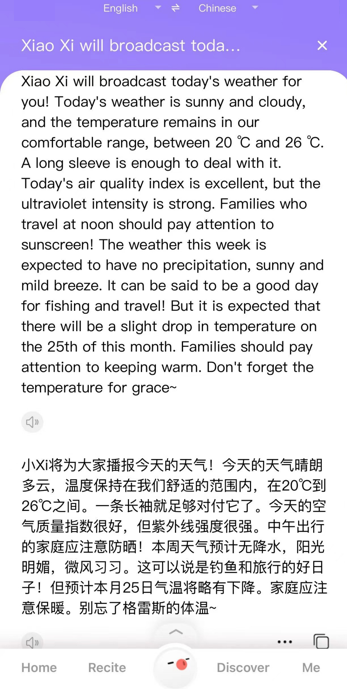
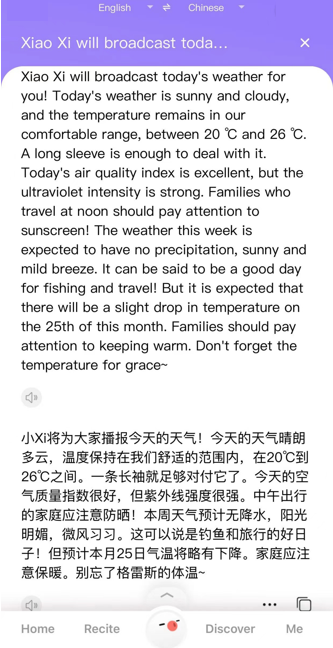
Figure 1: Process of re-coded translation.
Table 1: Proportion of human/robots in 5 conditions.
Group | Robot | Human |
High expectations group | 25% | 75% |
Medium expectations group | 50% | 50% |
Low expectations group | 75% | 25% |
Control 1(robot) | 100% | 0% |
Control 2(human) | 0% | 100% |
Grunert believed that human’s needs can be met through a variety of resources [14]. These resources can be ''x'' corresponding to demand, or ''y'' seemingly unrelated to demand. For example, when people's interpersonal needs are not met and they feel lonely, they can go directly to date close friends or roughly watch a comedy movie. Therefore, we find that compensatory consumption mostly appears to eliminate psychological discomfort, and there is no specific paradigm. In this experiment, the most common compensatory consumption behavior, namely contemporary eating, is used as the dependent variable.
Then, based on PsychoPy2020.1.3, we designed a virtual scene using artificial intelligence speech robots for the purpose of dining in restaurants. Before making consumption eating behaviors, participants would experience three scenes of dialogue with artificial intelligence, and the contents involved were daily conversation topics (weather, restaurant location and food recommendation). After three conversations, participants were asked to choose from two well-designed menus. The prices of the two menus were different, but the dishes involved were completely consistent, just disrupting the order and the names of the dishes. For example, in Chinese, ''干贝'' and ''瑶柱'' were different names of scallop. This method is used as an indicator of the dependent variable-compensatory consumption. (Figure 2 shows the virtual menu)

Figure 2: Virtual menu in procedure.
Finally, the subjects will complete the questionnaire on the evaluation of artificial intelligence services, using 5 point Likert scale, including three questions: degrees of satisfaction, personification and comfort with robot services. The first two questions were designed to interfere with the subjects ' awareness of the real purpose of the experiment, and comfort was the measure of the experimental dependent variable-familiarity.
3.2. Participant
Twenty subjects were invited online through the Naodao platform, including 10 males and 10 females, with an average age of 19.79. All subjects had normal IQ, no psychosis and no alcohol abuse.
3.3. Procedure
This experiment adopts a within-subject design, and since the experiment has five degrees of violation of expectations, in order to balance the sequence effect, each subject is presented with five experimental conditions in random order. (All experimental materials in each trial run against expectations equally.)
At the beginning of the experiment, the subject is shown with the instruction ''Your goal of today's trip is to go out to a restaurant for dinner, and your budget is 100 yuan. During this trip, you will have three sections of communication with Xiaoxi, an artificial intelligence speech robot. Please read Xiaoxi's response carefully, choose your favorite set meal and evaluate the artificial intelligence service after the communication. '
Next, subjects will discuss the daily topic of ''weather, place, and food recommendation'' with the robot in three scenarios. (Figure 3 shows part of the scenario)
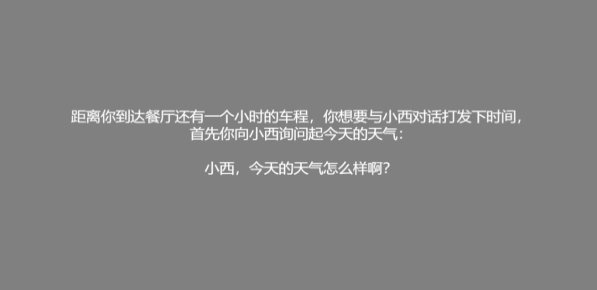
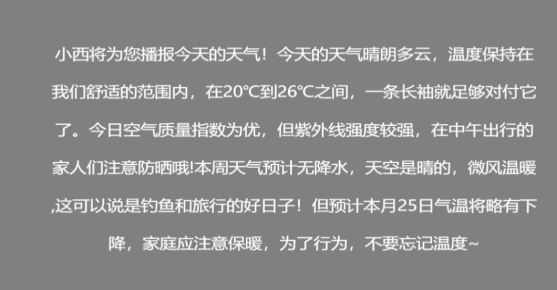
Figure 3: Part of scenario in procedure.
Finally, participants were asked to choose between sets with highly overlapped dishes but different prices, and the robot service was evaluated in the end.
After collecting the information, retain the data for further data analysis.
4. Results
The experiment finally collected 20 data points and got 19 valid data after removing the extreme value sample. In the part of data analysis, we will use the personification of 0–100% as the classification of groups, which means the proportion of human language in the text, to facilitate the observation of the curves generated by the change of personification. Specifically, the control 1 group is 0%, the low expectation group is 25%, the medium expectation group is 50%, the high expectation group is 75%, and the control 2 group is 100%. Meanwhile, in the experimental design, for the set chosen by subjects, the expensive set is defined as 1, and the cheap set is defined as 0, in order to observe the possibility of making compensatory consumption behaviors.
Firstly, descriptive statistics are conducted on the subjects' familiarity under different personification degrees. As shown in Figure 4, we can observe that under the condition of lower levels of personification (0%, 25%, 50%), the familiarity degrees of subjects remain at around 3, namely neutral emotions. However, under the 75% level of personification, familiarity showed a plunge at 2.47, and at 100% in personification, familiarity quickly rises to 4.47, which is highly consistent with the uncanny valley effect.
Next, descriptive statistics are conducted on the compensatory consumption behaviors of participants under different personification degrees. As shown in Figure 5, we can find that the possibility of compensatory consumption behaviors remains at 0.3–0.4 (lower than 0.5) under the conditions of low personification (0%, 25%) and high personification (100%), indicating that it is more difficult for participants to make compensatory consumption behavior. When the personification degree is high, namely 50–75%, the possibility of compensatory consumption behavior is higher than 0.7, indicating that when the personification degree is high, the subjects are more likely to engage in compensatory consumption behavior.
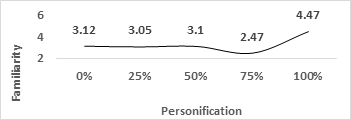
Figure 4: Familiarity curve in different personification.
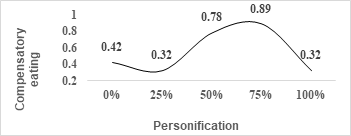
Figure 5: Compensatory eating curve in different personification.
Then, we conduct variance analysis on personification conditions, gender, familiarity, and compensatory consumption behavior to determine whether the differences are significant and whether there is an interaction effect.
First, as shown in Table 2, ANOVA shows that the main gender effect is significant (F = 6.323, p <.014). Under the same personification condition, the familiarity of different genders (men/women) is significantly different, and further analysis is shown in Figure 6. The results show that, under the same personification condition, the familiarity of men with robots is significantly lower than that of women. The main effect of personification was significant ( F = 10.168, p <.001 ), indicating that there are significant differences between different personification degrees in subjects' familiarity with robots. And there is no interaction effect between gender and personification. ( F =.326, p >.05 )
Table 2: ANOVA of gender & personification on familiarity.
Variance | df | MSE | F | Sig. |
Gender | 1 | 3.146 | 6.323 | .014 |
Personification | 4 | 10.168 | 20.437 | .000 |
Gender*Personification | 4 | .326 | .654 | .625 |
Error | 85 | .498 | ||
Total | 94 |
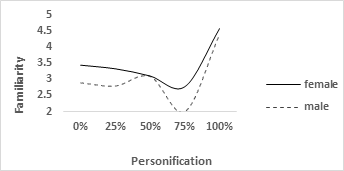
Figure 6: Familiarity curve in different gender & personification.
Table 3: ANOVA of gender & personification on compensatory consumption behavior.
Variance | df | MSE | F | Sig. |
Gender | 1 | .017 | .084 | .773 |
Personification | 4 | 1.414 | 7.028 | .000 |
Gender*Personification | 4 | .171 | .850 | .497 |
Error | 85 | .201 | ||
Total | 94 |
Then, for compensatory consumption behavior, as shown in Table 3, ANOVA results show that: gender's main effect is not significant (F =.084, p >.05), which means gender will not have an impact on compensatory consumption behavior; the main effect of personification was significant ( F =7.028, p <.01), which indicates significant differences in compensatory consumption behavior caused by different personification; the interaction effect of gender and personification is not significant.
In the experimental hypothesis, it is determined that compensatory consumption behavior is caused by the violation of expectations, and the uncanny valley curve is essentially a changing curve of familiarity caused by the violation of expectations. Therefore, compensatory consumption behavior is predicted to be negatively correlated with familiarity.
The linear regression analysis of compensatory consumption behavior and familiarity shows that compensatory consumption behavior and familiarity are significantly negatively correlated, as shown in Figure 7 (r = -0.223, p <.05).
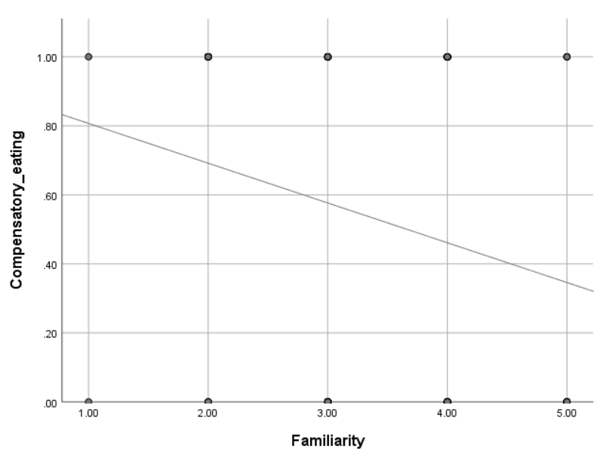
Figure 7: The linear regression of compensatory consumption behavior and familiarity.
Finally, in order to further determine the specific value of the familiarity threshold under language stimulation, the experimental data is further used for curve estimation. The result shows that the cubic equation has the best fitting effect (taking the familiarity as the dependent variable and the personification as the independent variable), which is Y=0.206x3-1.603x2+3.559x+0.937. Mathematical calculations show that when the personification is about 64.25%, the familiarity reaches its lowest value (threshold). Meanwhile, when the personification is about 38.93%, the familiarity begins to rapidly decrease, so 39% is regarded as the warning line of the sharp decline of the preference curve under language stimulation.
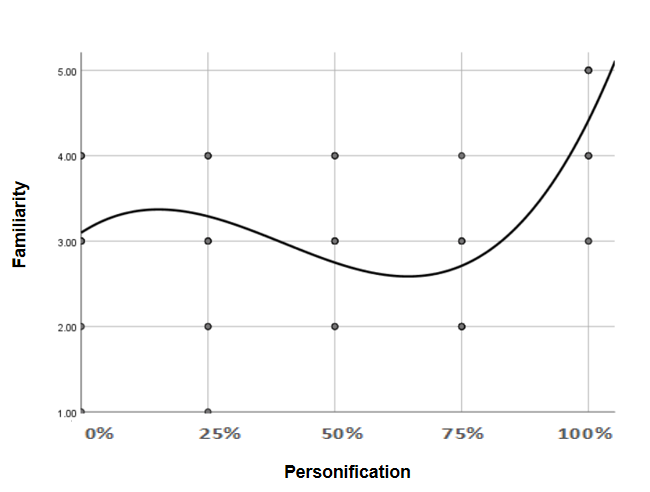
Figure 8: Fitting curve of familiarity and personification.
5. Discussion
The results of the experiment are basically in line with the previous research hypothesis, especially the design of language materials. It not only proves that there is also an uncanny valley effect under language stimulation, but also provides empirical support for the fact that high expectation violation is the root cause of the sharp decline in familiarity curve. Finally, the threshold of experimental exploration is also of guiding significance for the research of artificial intelligence enterprises.The research of robot personification is beneficial at the beginning, but it is very likely to cause a reaction at 39%–64%, namely the middle stage of the personification continuum. Only when the threshold is broken can it have positive benefits.
However, there are some results that require discussion in this study. In the ANOVA of familiarity, we found that gender differences are significant, which means, under various personification conditions, the familiarity of males is lower than that of females, and women fluctuate less among different conditions of violation expectation. This may be because women are more tolerant of emotional changes and tend to hold a positive attitude towards strange things. Previous studies have found that women's empathy and understanding are stronger than men's, and the gender roles of more women are more harmonised [15]. And they also look forward to a positive response from the interlocutor [8]. Depending on the reciprocal nature of self-disclosure, they tend to perform more intimately [16]. At the same time, we will find that in the curve of compensatory consumption behavior in personification, the stage of sharp rise is about 25%–50% of personification, while in the curve of familiarity, the sharp decline is between 50%–75%. In this regard, one possible explanation is that when the degree of personification is 25%–50%, due to the different psychological thresholds of individuals, some people have produced compensatory consumption behavior caused by violation expectations, which is the behavioral response of the subconscious under the threshold. Since they do not realize and even misunderstand the result of the intimacy brought about by the increase in the personification degree of robots, when the psychological threshold is broken, there will be a sharp decline in emotional feelings. At the same time, compensatory consumption behavior continues to rise and complements familiarity.
6. Conclusion
This study theoretically demonstrates the essence of the uncanny valley effect as the expectation violation hypothesis and designs experiments to explore the changes in familiarity and compensatory consumption behaviors caused by different degrees of expectation violation under the stimulation of language materials. The results show that: (1) in the language stimulus materials, there is a familiarity curve on the personification continuum similar to the uncanny valley effect. (2) Under the language stimulus materials, there is a compensatory consumption index curve complementary to the degree of familiarity on the personification continuum. (3) There is a threshold in the personification curve, which makes the degree of the violation expectation the highest, the familiarity the lowest, with the highest compensatory consumption behavior.
Finally, there are still some limitations in the design of this study. First of all, the sample size of the experiment is small, with only 20. Meanwhile, most of the participants are college students aged approximately 20, which may be affected by the same cultural context and educational background. Secondly, in order to facilitate the implementation of the experiment, five personification fixed values are selected as independent variables, while, after all, the personification is a continuum from 0 to 100. Whether the accurate threshold can be obtained by a statistical fitting curve needs further discussion. Therefore, in future research, it is promising to study whether there is still the uncanny valley effect under obvious language stimuli in different ages and cultural backgrounds.In addition, it is hoped that, on the basis of the research on the threshold, it could be further explored relevant how to reduce the negative impact of the uncanny valley effect through some specific interventions, such as reducing compensatory consumption behaviors. Finally, we hope to continue to enrich the research on the uncanny valley effect and explore the uncanny valley effect under other sensory stimuli channels like auditory.
References
[1]. Wang Tao & Xie Zhipeng. (2014).Overview of personification marketing research. Foreign economy and management(01),38-45.doi:10.16538/j.cnki.fem.2014.01.005.
[2]. Damar Vicio Rizky & Hartono Markus.(2018).The impact of supply chain partnership and market driven strategy on consumer behavior in buying Vocaloid Hatsune Miku products. MATEC Web of Conferences. doi:10.1051/matecconf/201820401010.
[3]. Mori, Masahiro (2012), “The Uncanny Valley,” Robotics & Automation Magazine, IEEE, 19 (2), Karl F. MacDorman and Norri Kageki, trans. 98–100.
[4]. MANDEL N, RUCKER D D, LEVAV J, et al. The Compensatory consumer behavior model: how self-discrepancies drive consumer behavior[J]. Journal of Consumer Psychology, 2017, 27(1).
[5]. Liu Wumei, Wang Haizhong & Chen Zengxiang. (2014). Review and Prospect of Compensatory Consumption Research. Foreign Economy and Management (09),20-28.doi:10.16538/j.cnki.fem.2014.09.006.
[6]. Du Yanyong. ( 2020 ). The Uncanny Valley Effect Analysis. Yunnan Social Sciences ( 03 ), 37 – 44 + 187.
[7]. Mender,M.,Scott,M.L.,Doorn,J.V.,Grewal,D.,&Shanks,I..(2019).Servicerobotsrising:howhumanoidrobotsinfluenceserviceexperiencesandelicitcompensatoryconsumerresponses.JournalofMarketingResearch,56(4),002224371882282.
[8]. Bian Shengnan, Li Fengqi, Chen Chao, Qi Chunhui & Zhang Zhen. (2021). Understanding Social Support and Empathy : The Mediating Role of Narcissism and Its Gender Differences. Psychological Communication(02),82-86.
[9]. Harry Brenton,Juan Hernandez,Fernando Bello... & Ara Darzi.(2005).Using multi-media and Web3D to enhance anatomy teaching. Computers & Education(1). doi:10.1016/j.compedu.2005.06.005.
[10]. ADLER A. Study of organ inferiority and its psychical compensation: a contribution to clinical medicine. New York: Nervous and Mental Disease Publishing Company, 1917: 1-15.
[11]. Sang Hui & Wang Xuejie. (2022). Review of Compensatory Consumption Research Based on Self-discrepancy Theory. Journal of Liaoning University of Technology ( Social Science Edition )(02),46-50.doi:10.15916/j.issn1674-327x.2022.02.012.
[12]. Zhong Xiangwei, Wang Junfeng, Liu Canghai & Jiang Gang. (2018 ). Cause Analysis of Terror Valley Effect Based on Emotional Fuzzy Computing. Packaging Engine--ering.(14),190-196.doi:10.19554/j.cnki.1001-3563.2018.14.035.
[13]. Li Xin. (2011). Interactive Research on Mobile Phone Translation Applications for User Mental Models ( Master 's degree thesis, Hunan University ).https://kns.cnki.net/KCMS/detail/detail.aspx?dbname=CMFD2012&filename=1012327869.nh
[14]. Gruner S. On gender differences in eating behaviour as compensatory consumption [R]. Proceedings of the 2nd Conference on Gen-derand Consumer Behaviour, University of Utah , USA , 1993.
[15]. Yan Zhiqiang & Su Yanjie. (2018). Gender differences in empathy : evidence from meta-analysis. Psychological development and education(02),129-136. doi:10.16187/j.cnki.issn1001-4918.2018.02.01.
[16]. Derlega, V. J. , Winstead, B.& Greene, K. (1997). Self-disclosure and starting a close relationship.
Cite this article
Hu,X. (2023). The Uncanny Valley Effect and Induced Compensatory Consumption Behavior in Language Conditions. Lecture Notes in Education Psychology and Public Media,4,434-444.
Data availability
The datasets used and/or analyzed during the current study will be available from the authors upon reasonable request.
Disclaimer/Publisher's Note
The statements, opinions and data contained in all publications are solely those of the individual author(s) and contributor(s) and not of EWA Publishing and/or the editor(s). EWA Publishing and/or the editor(s) disclaim responsibility for any injury to people or property resulting from any ideas, methods, instructions or products referred to in the content.
About volume
Volume title: Proceedings of the International Conference on Interdisciplinary Humanities and Communication Studies (ICIHCS 2022), Part 3
© 2024 by the author(s). Licensee EWA Publishing, Oxford, UK. This article is an open access article distributed under the terms and
conditions of the Creative Commons Attribution (CC BY) license. Authors who
publish this series agree to the following terms:
1. Authors retain copyright and grant the series right of first publication with the work simultaneously licensed under a Creative Commons
Attribution License that allows others to share the work with an acknowledgment of the work's authorship and initial publication in this
series.
2. Authors are able to enter into separate, additional contractual arrangements for the non-exclusive distribution of the series's published
version of the work (e.g., post it to an institutional repository or publish it in a book), with an acknowledgment of its initial
publication in this series.
3. Authors are permitted and encouraged to post their work online (e.g., in institutional repositories or on their website) prior to and
during the submission process, as it can lead to productive exchanges, as well as earlier and greater citation of published work (See
Open access policy for details).
References
[1]. Wang Tao & Xie Zhipeng. (2014).Overview of personification marketing research. Foreign economy and management(01),38-45.doi:10.16538/j.cnki.fem.2014.01.005.
[2]. Damar Vicio Rizky & Hartono Markus.(2018).The impact of supply chain partnership and market driven strategy on consumer behavior in buying Vocaloid Hatsune Miku products. MATEC Web of Conferences. doi:10.1051/matecconf/201820401010.
[3]. Mori, Masahiro (2012), “The Uncanny Valley,” Robotics & Automation Magazine, IEEE, 19 (2), Karl F. MacDorman and Norri Kageki, trans. 98–100.
[4]. MANDEL N, RUCKER D D, LEVAV J, et al. The Compensatory consumer behavior model: how self-discrepancies drive consumer behavior[J]. Journal of Consumer Psychology, 2017, 27(1).
[5]. Liu Wumei, Wang Haizhong & Chen Zengxiang. (2014). Review and Prospect of Compensatory Consumption Research. Foreign Economy and Management (09),20-28.doi:10.16538/j.cnki.fem.2014.09.006.
[6]. Du Yanyong. ( 2020 ). The Uncanny Valley Effect Analysis. Yunnan Social Sciences ( 03 ), 37 – 44 + 187.
[7]. Mender,M.,Scott,M.L.,Doorn,J.V.,Grewal,D.,&Shanks,I..(2019).Servicerobotsrising:howhumanoidrobotsinfluenceserviceexperiencesandelicitcompensatoryconsumerresponses.JournalofMarketingResearch,56(4),002224371882282.
[8]. Bian Shengnan, Li Fengqi, Chen Chao, Qi Chunhui & Zhang Zhen. (2021). Understanding Social Support and Empathy : The Mediating Role of Narcissism and Its Gender Differences. Psychological Communication(02),82-86.
[9]. Harry Brenton,Juan Hernandez,Fernando Bello... & Ara Darzi.(2005).Using multi-media and Web3D to enhance anatomy teaching. Computers & Education(1). doi:10.1016/j.compedu.2005.06.005.
[10]. ADLER A. Study of organ inferiority and its psychical compensation: a contribution to clinical medicine. New York: Nervous and Mental Disease Publishing Company, 1917: 1-15.
[11]. Sang Hui & Wang Xuejie. (2022). Review of Compensatory Consumption Research Based on Self-discrepancy Theory. Journal of Liaoning University of Technology ( Social Science Edition )(02),46-50.doi:10.15916/j.issn1674-327x.2022.02.012.
[12]. Zhong Xiangwei, Wang Junfeng, Liu Canghai & Jiang Gang. (2018 ). Cause Analysis of Terror Valley Effect Based on Emotional Fuzzy Computing. Packaging Engine--ering.(14),190-196.doi:10.19554/j.cnki.1001-3563.2018.14.035.
[13]. Li Xin. (2011). Interactive Research on Mobile Phone Translation Applications for User Mental Models ( Master 's degree thesis, Hunan University ).https://kns.cnki.net/KCMS/detail/detail.aspx?dbname=CMFD2012&filename=1012327869.nh
[14]. Gruner S. On gender differences in eating behaviour as compensatory consumption [R]. Proceedings of the 2nd Conference on Gen-derand Consumer Behaviour, University of Utah , USA , 1993.
[15]. Yan Zhiqiang & Su Yanjie. (2018). Gender differences in empathy : evidence from meta-analysis. Psychological development and education(02),129-136. doi:10.16187/j.cnki.issn1001-4918.2018.02.01.
[16]. Derlega, V. J. , Winstead, B.& Greene, K. (1997). Self-disclosure and starting a close relationship.









